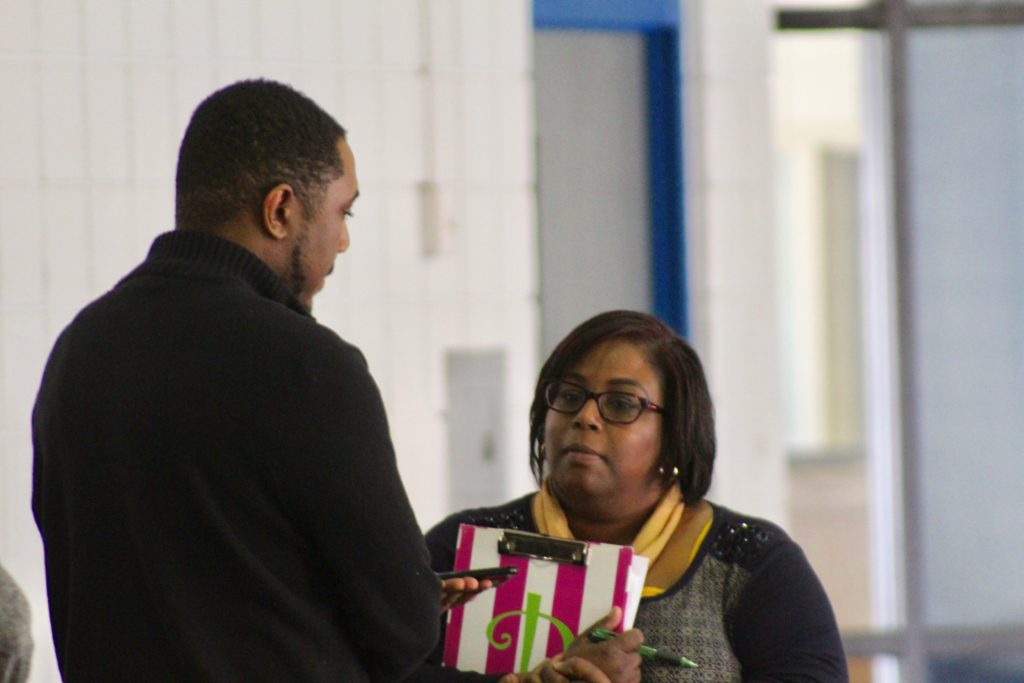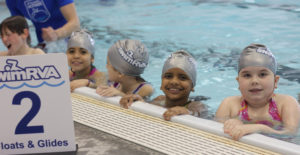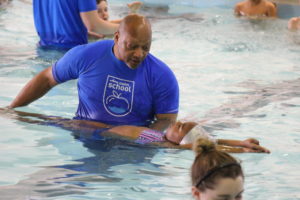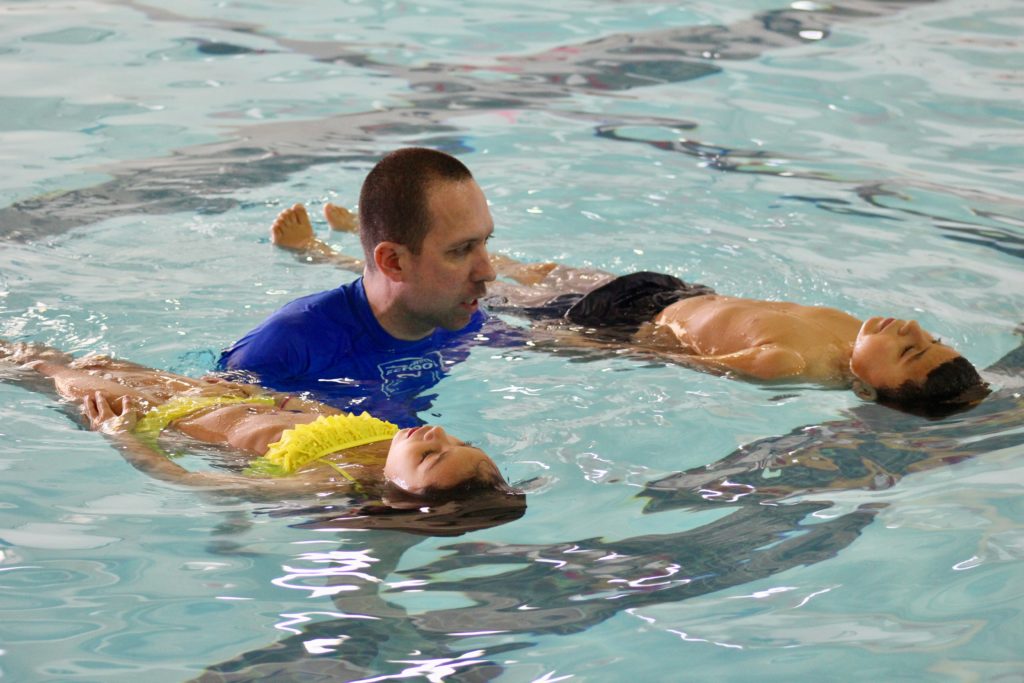Author: Benjamin Harrell
Children’s smiles filled the buses from Dupont Elementary as they left the parking lot after another year of successful aquatic programming. These more than 100 second graders had just completed another round of Learn to Swim with SwimRVA. But what did the students learn? What were the benefits of taking them out of the classroom?
The SwimRVA Learn to Swim program works to provide free swim lessons for second graders in elementary schools around the Greater Richmond region, continuing to push the needle forward and ensure that every child has access to aquatics. Since 2012, over 6,300 students have gone through the cost-free, station-based program. That is over 40,000 free swim lessons provided to our children. But how does this impact time in the classroom?

Barbie Steed is an elementary teacher from Dupont Elementary, one of the schools in Hopewell City that have partnered with SwimRVA for the Learn to Swim program. Mrs. Steed’s classroom has participated since the program’s inception 6 years ago, making her a witness to the positive impacts it has had on her students since the beginning.
Some of the children were originally afraid to get in the water; a few refused to even touch the pool surface, according to Steed. The children’s fears echo disturbing statistics according to the Center for Disease Control (CDC):
- 50% of the US population does not know how to swim
- 66% of children that qualify for a free or reduced lunch will grow up and never learn how to swim
- Drowning is the 2nd leading cause of accidental injury-related death in children aged 1–14 years
“Some of the students actually surprised me with how well, and how quickly, they learned the skills,” said Mrs. Steed, reminiscing about her latest class’ performance in the water.
After working with SwimRVA trained coaches, the same kids who were afraid of the pool learned to respect and appreciate the water, instead of fearing it. “[Learn to Swim] teaches kids to not be afraid of the water. Even if they can’t swim [fully], it teaches them a way to survive until help can arrive,” Mrs. Steed affirmed.
Water safety is one of the main goals of the Learn to Swim initiative, but many students gain more than just free swim lessons through the collaboration. Mrs. Steed pointed out how camaraderie developed between her students after practicing together, “They tend to celebrate those that have moved up [stations] and encourage those that haven’t.”
To instill confidence in students, SwimRVA uses positive reinforcement through the “Bell of Success.” Whenever a student passes a set of skills at a station, he or she rings the Bell of Success, which ignites a round of applause from every teacher, parent, and student at the pool.

The child is also presented with a sticker to mark his or her accomplishments on a personal station chart. With seven stations, there are plenty of chances to be rewarded for hard work. This positive encouragement and reinforcement is an important tool for building self-confidence these students can use in and outside of the classroom.

After participating in the Learn to Swim initiative, Mrs. Steed’s Hopewell Elementary students are calmer and more focused on their lessons in school. A few have also begun to set time management goals to account for extracurricular activities.
“One student transferred to us from another school, so she actually got to go through the program twice.” The child’s mom shared positive outcomes from home. “Her mom said she has started setting goals for herself, saying things like, ‘I need to get this done early, because we swam today and I want to [have time to] relax later.’”
Research by the National Center for Education Statistics shows that extracurricular activities correlate to higher academic achievement and aspiration, and Mrs. Snead is a strong advocate for incorporating more activities into the standardized curriculum. “I wish we had more of them.”

“More” is always at the forefront of SwimRVA water safety initiatives. Since 2012, the “Drownproof Richmond” initiative has expanded to 61 schools. Richmond now has 8 out of the 9 school districts participating in the Learn to Swim program. SwimRVA’s goal is to have every elementary school involved in the program by the year 2020.
In short, the Learn to Swim program has developed into a “traveling classroom.” It is more than free swim lessons. It is access to a new way of learning, a new style of setting goals, a new bright light for these children to see their peers in, and a tool for success.
How can you help make this goal a reality?
- Become an Aquatics Advocate: May is National Water Safety Month. Share the importance of learning to swim with you family, friends and neighbors.
- Learn to swim: No matter what your age is you should learn to swim. Learning to swim not only provides you with the skills to be water safe and the tools to be active, healthy and fit, it also shows your children that swimming is an essential skill that everyone should have access to.
- Stay healthy through swimming: Swimming is a great workout. Incorporate swimming into your next workout.
- Get involved: Find out when and where your local school participates in a Learn to Swim program. If they do not, then speak up. Together we can make the changes so our kids have the resources to learn how to swim.
- Donate: Learn how you can give back and join the movement. You can ensure that every child in Richmond has the tools to be water safe.
Follow us for the latest! #SwimForIt!
The Mission of SwimRVA is to elevate swimming in the Richmond region making water safety and aquatic fitness more accessible to all. We promise to serve as a catalyst for regional aquatics and community-wide focus on water safety, health and fitness, sports tourism, and competitive aquatics. Donate today to help support our mission
